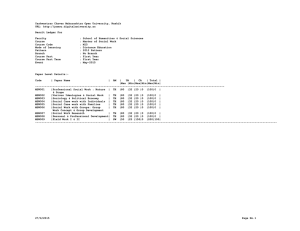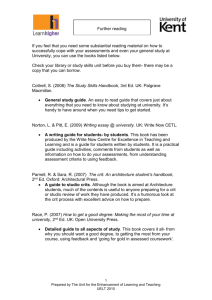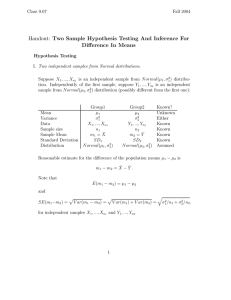One Sample Hypothesis Testing And ... the Mean
advertisement
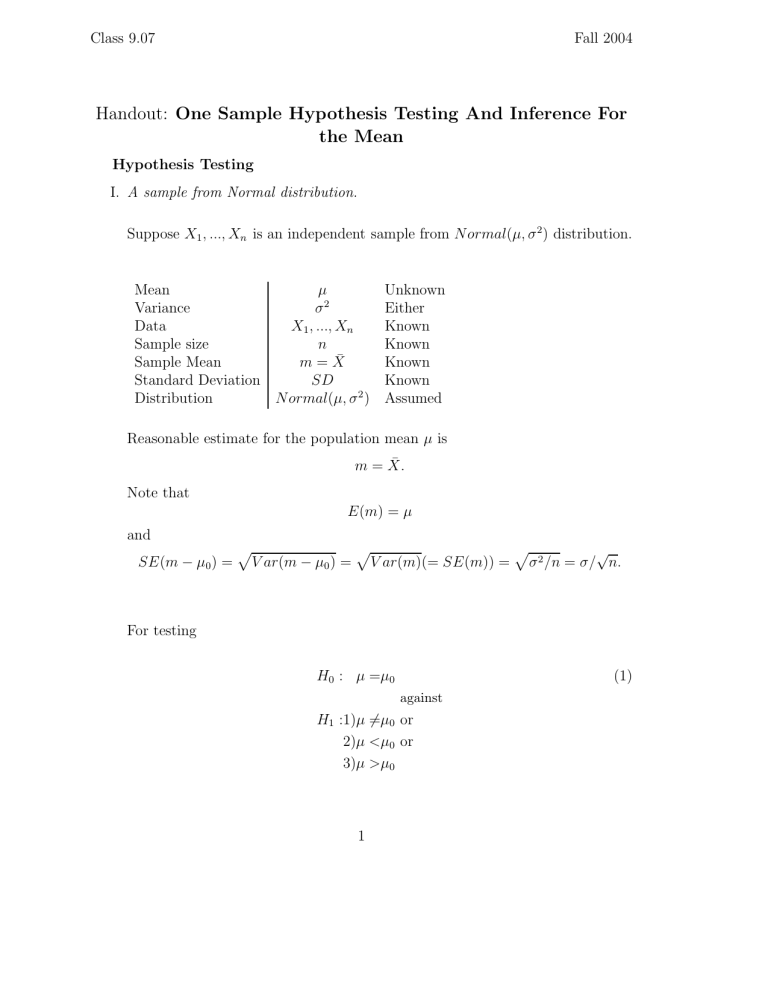
Class 9.07 Fall 2004 Handout: One Sample Hypothesis Testing And Inference For the Mean Hypothesis Testing I. A sample from Normal distribution. Suppose X1 , ..., Xn is an independent sample from Normal(µ, σ 2 ) distribution. Mean µ Variance σ2 Data X1 , ..., Xn Sample size n ¯ Sample Mean m=X Standard Deviation SD Distribution Normal(µ, σ 2 ) Unknown Either Known Known Known Known Assumed Reasonable estimate for the population mean µ is ¯ m = X. Note that E(m) = µ and SE(m − µ0 ) = � V ar(m − µ0 ) = � � √ V ar(m)(= SE(m)) = σ 2 /n = σ/ n. For testing H0 : µ =µ0 (1) against H1 :1)µ =µ0 or 2)µ <µ0 or 3)µ >µ0 1 use test statistics dobt = m − µ0 SE(m) which follows some distribution d∗ . Theorem. Under the above assumptions about the sample X1 , ..., Xn , for test­ ing test H0 : µ − µ0 = 0 at α - significance level vs 1) H1 : µ − µ0 = 0. Reject H0 if |d∗obt | ≥ d∗crit (α/2) 2) H1 : µ − µ0 < 0. Reject H0 if d∗obt ≤ −d∗crit (α) 3) H1 : µ − µ0 > 0. Reject H0 if d∗obt ≥ d∗crit(α) Computation of SE(m) and choice of distribution d∗ : 1. σ is known √ SE(m) = σ/ n Test statistics d∗obt = zobt = m−µ √0 σ/ n follows standard Normal distribution z. 2. σ is unknown, but n is large (≥ 30) In this case can assumption. √ omit Normality √ SE(m) = σ/ n ≈ SD/ n and m−µ √0 approximately follows standard Normal test statistics d∗obt = zobt = SD/ n distribution z. 3. σ is unknown, √ and n is not √ large enough (≤ 30) SE(m) = σ/ n ≈ SD/ n and m−µ √0 follows t distribution with df = n − 1 test Statistics d∗obt = tobt = SD/ n degrees of freedom. II. Proportions For a random variable X drawn from a Binomial(n, p) distribution, let p̄ = X/n. For testing 2 H0 : p =p0 (2) against H1 :1)p =p0 or 2)p <p0 or 3)p >p0 use test statistics dobt = p̄−p0 . SE(¯ p−p0 ) Since for a Binomial(n, p) random variable X and p̄ = X/n, V ar(¯ p − p0 ) = p(1−p) V ar(¯ p) = n , for H0 true (that is, p = p0 ) have SE(¯ p − p0 ) = Then � � p − p0 ) = V ar(¯ p0 (1 − p0 ) n p̄ − p0 test statistics d∗obt = zobt = � p0 (1−p0 ) n has approximately Normal z distribution if np, n(1 − p) ≥ 10. 3 Confidence Intervals For a test statistics d∗obt = m−µ0 SE(m) we reject H0 if |d∗obt | ≥ d∗crit (α/2). If ∗ < d∗crit (α/2) −d∗crit (α/2) < dobt we conclude that evidence against H0 is not statistically significant at α - significance level. Conficence interval for µ is computed by inverting non-rejection region m − µ0 ∗ < dcrit (α/2) SE(m) −d∗crit (α/2)SE(m) < m − µ0 < d∗crit(α/2)SE(m) −d∗crit (α/2) < with (1 − α)100% confidence interval for µ: (m − d∗crit (α/2)SE(m); m + d∗crit (α/2)SE(m)) 4
